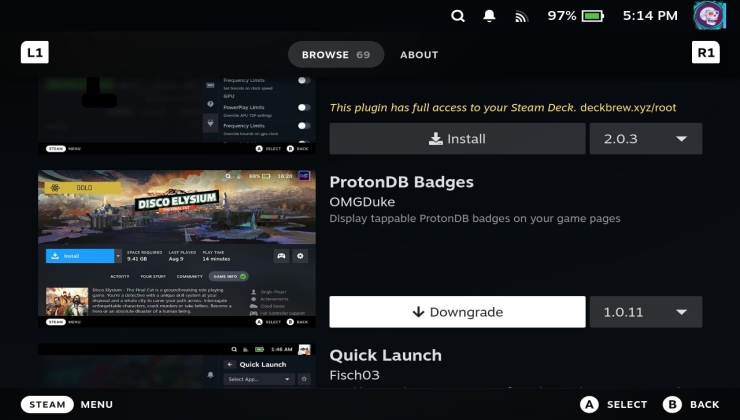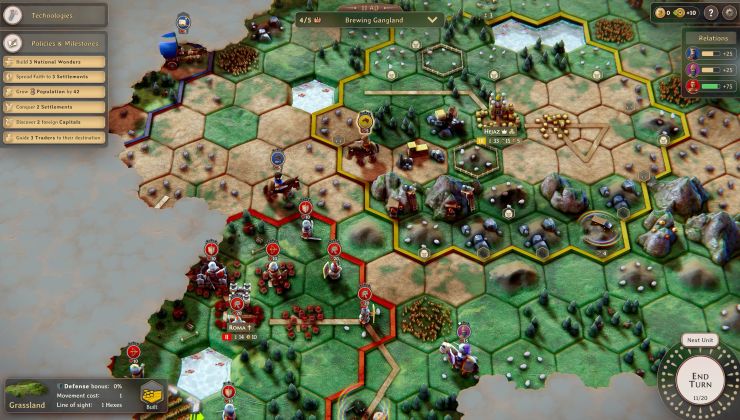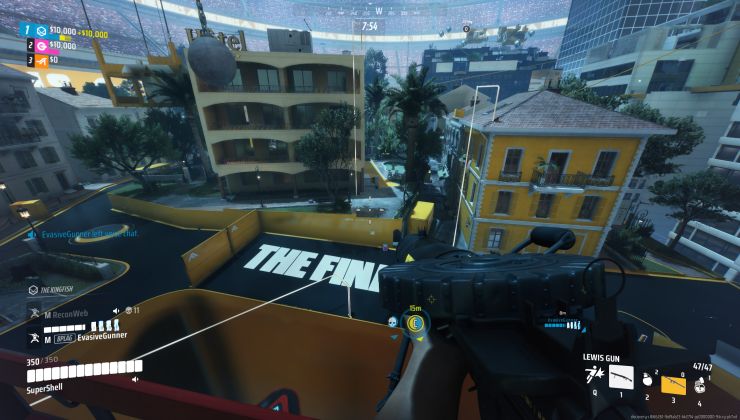SteamOS is still clinging on, somehow. Valve just released a new Beta that is mostly just security updates and Debian 8.9 updates.
Security updates are important of course, but each time I hear of a new SteamOS Beta coming out I'm always hopeful it includes something interesting. One of the only really interesting bits to this update is this line "steamos-base-files - udev rules from Feral to enable steering wheel support", good old Feral! Having good steering wheel support in SteamOS could be quite important in future, if we continue to get more top quality racing games like F1 2017, DiRT Rally and so on.
I do have a feeling that once Valve have managed to polish up VR support for Linux, that they might make a new splash for SteamOS and Steam Machines. I'm probably being too optimistic there, but I have to think that all their work on Mesa has to be for something. Right now though, it does very much seem like SteamOS itself is on life support, waiting for someone to come along and save it.
Thankfully with Valve working on Mesa, VR support and more, they're still doing rather a lot to help Linux gaming.
Thanks for the tip mphuZ!
Steam Linux exists because Valve got scared by Metro AppStore presented in Windows RT/8.
After "market disaster" of Metro - Microsoft abandoned concept to "kill" win32 environment, so they released Win8.1/10 where win32 apps are again equal to promoted by Microsoft Metro/UWP.
Unfortunately - in my opinion - Valve put Linux "into the refrigerator". Some progress still exists (especially updates to AMD drivers, but also SteamVR alpha), but unfortunately it is very little progress... Surprisingly even Wine has better progress - more, and more DX11 games are playable...
So... Good luck for Windows 10S - Metro only system where Steam cannot be installed. It could be "wake up" signal for Valve...
Not with exclusive titles nor to the same extent in any other way but still...a strong and commited effort by Valve to challenge Windows as "The PC-Gaming OS of Choice". To say that my expectations fell short would be a truly absurd understatement.
And to think that for a short time I was naive enough to believe that Valve would support their "SteamOS & the Steammachines" in a similar way that Microsoft supports their Xboxes or Sony their Playstations with corresponding OS:s.
Not with exclusive titles nor to the same extent in any other way but still...a strong and commited effort by Valve to challenge Windows as "The PC-Gaming OS of Choice". To say that my expectations fell short would be a truly absurd understatement.
Intention was bringing attention to Linux at first place. At that time devs didn't know anything about it , even game engines didn't support it.
Hell , even i owe my full time Linux usage to Valve. It was impossible for me before , without games.
We need Bethesda like companies and their games to grow.
If they invest in more documents, books and online classes for Vulkan, it would appear more devs having knowledge for port to linux.
Also they could invest in Feral for they being able to make more ports and promote them to more devs
Features might be nice. But what exactly is SteamOS missing in your opinion?
Personally I do not know anyone that runs steams OS as a daily driver nearly all the linux gamers i know stick to ubuntu lts based distros with a smattering of arch here and there. If there is a silent market out there running Steam os i would love to know why they run it.
Guys, to be honest this is it. We already had the best out of the "linux gaming" movement, now it's loosing momentum. There will be some more games but it will not get any better than it is right now. It might get worse though. We will not exit the artificial life support phase unless something happens on the Microsoft - Valve front.I think you're being incredibly pessimistic. Nothing about Linux gaming is losing momentum. SteamOS is not the start and end of Linux gaming. I've found the experience of Linux gaming to get better year on year.
Edit: Missed an important word.
Last edited by Liam Dawe on 9 Nov 2017 at 10:37 pm UTC
Guys, to be honest this is it. We already had the best out of the "linux gaming" movement, now it's loosing momentum. There will be some more games but it will not get any better than it is right now. It might get worse though. We will not exit the artificial life support phase unless something happens on the Microsoft - Valve front.I think you're being incredibly pessimistic. Nothing about Linux gaming is losing momentum. SteamOS is not the start and end of Linux gaming. I've found the experience of Linux gaming to get better year on year.
Do you find that there is more to report on year over year? If it is increasing or decreasing are we looking at a linear change or a curve? I suspect many of us are caught up counting volume of big name releases without paying much attention to the growth of development framework or even attention returning to old projects.
My inbox is always full of developers wanting some attention, this year more than ever.Guys, to be honest this is it. We already had the best out of the "linux gaming" movement, now it's loosing momentum. There will be some more games but it will not get any better than it is right now. It might get worse though. We will not exit the artificial life support phase unless something happens on the Microsoft - Valve front.I think you're being incredibly pessimistic. Nothing about Linux gaming is losing momentum. SteamOS is not the start and end of Linux gaming. I've found the experience of Linux gaming to get better year on year.
Do you find that there is more to report on year over year? If it is increasing or decreasing are we looking at a linear change or a curve? I suspect many of us are caught up counting volume of big name releases without paying much attention to the growth of development framework or even attention returning to old projects.
The problem is the same as always, hyped up expectations that Linux gaming would have exploded. It's a slow, steady improvement every year.
We are getting to the stage where AMD drivers are reaching towards windows level performance (sometimes better). I think once that's mainstream linux will become a much better environment for newbies looking to experience it. Also hopefully wayland is sorted out fully soon.
Last edited by TheRiddick on 9 Nov 2017 at 10:58 pm UTC
Sorry for lengthy post. I wanted to describe shortly my idea about what Valve could do and before I knew it this whole thing splashed out from under my fingers.
The way I see it...
Valve should release Steam Machines as an open project, i.e. a list of widely available hardware that works well together so that people could look at reference with model numbers and simply order all the necessary bits from whatever on-line shops, then pack it in whatever case, then install SteamOS and put a sticker on. With zero hassle, out of the box support for all listed hardware. Just 3 to 4 models each year, my proposition for 2018:
- low end (~60fps 720p, ~30 fps 1080p)
- medium (~60fps 1080p, ~30fps 2160p)
- high end (60fps 2160p or "VR ready" ;) )
- and maybe omgwtffullVR with headset and whatnot (120+fps 2160p)
All with Vulkan support, all with list of games that are proven to work on each of those platforms with given fps out of the box and with given in-game settings (console games come with prefixed settings any way, don't they?). If any manufacturer, producer or distributor (be it Amazon, eBuy, AlienWare, Intel, AMD, NVIDIA - you name it) wants to bundle those lists of hardware into ready to buy products, great for them and for the market. If someone wants to get on the list, just make your hardware run with SteamOS, pay some minor fee and send a ready to go unit to Valve for certification. You sell gaming laptops? No problem - just go through the same procedure. If people want to buy those, easy peasy, go to one of the above mentioned distributors and click "add to basket". If they want to make their own Steam Machine, go to any retailer and buy everything from the list to get a guaranteed smooth experience, or even show them the list and ask if they can make it for you.
The way it was done up to now seems to me like a very high level decision of someone who doesn't understand the market but heard you can make good money selling consoles. Steam Machines are not consoles. And you know what? I think they'd win the freaking race to "VR headset in every home" era because, lets face it, no console ever will run Metro: Last Light Redux in 4k 120fps with current prices and profit margin. Then Valve could focus on SteamOS for real and actually keep it up to date polishing standards and pushing them onto hardware producers.
Last edited by cprn on 13 Nov 2017 at 2:19 pm UTC
VR is 75-120fps, most sit at around 85-90hz btw. Which is achievable with a single 1080ti if the game is tweaked to run at that, the issue is most people put VR on in these games that added VR as a afterthought and dial it up to UTLRA and get low FPS. THAT is not how VR is meant to work, its mean to have a dynamic detail dialing setting system to keep FPS as high as possible.
True, that's always been a problem even in non VR.
Realistically How many people have a computer fitted with a 1080ti and decent CPU ? Not only that what about the 20 - 30% overhead on a Linux ports or the current driver short-falling in VR ? Every frame counts at 90fps 4k and not only the max frames but the minimum and the frame time too. I think this is why Valve are directly working on MESA and helping AMD get their VR frame latency down. Also With all the talk of WINE ports and flatpack's how are they going to deliver 100% or even 90% performance required for VR titles ? Can WINE games work in VR.
I think it will get better of course for VR on Linux, but if it wasn't already a game of catchup in the flat space for Linux just wait until you scroll through the ever increasing list of ( admittedly mostly shovelware ) 3D titles on Windows VR for VIVE / Oculus.. that said there are some real gems and they are mostly using Unreal engine ...
Then there is the new Windows MR headset. Samsung odyssey headsets and in the not too distant future 8k pimax headsets..are they compatible with Linux ? Even if they should support the steam-vr API that's not always how things pan out without headset driver support.
Last edited by TheRiddick on 10 Nov 2017 at 12:04 am UTC
* Valve basically did nothing to market "Steam Machines" in Australia and if I'm not too much mistaken, they were never even "officially" released in Australia (though we do have the "Steam" controllers in EB Games/GameStop);
* Steam Machine manufacturers - including Alienware - almost universally pushed "regular" computers over Steam Machines, even in markets where Steam Machines WERE actively sold;
* Much of the functionality in Steam (such as Steam VR) is still not officially supported by SteamOS.
* Too few "AAA" titles are still being brought to Steam/SteamOS - and Valve is not pushing hard enough to change this.
Yep, clearly there wasn't much effort behind this... In fact, I almost wonder why Valve even bothered at all.
I almost wonder why Valve even bothered at all.
I think it really was a parting shot at Microsoft to show them that they were not happy with the MS Store front. And what have Microsoft done ?? Doubled down on the store front and brought xboxone games & the service to Windows.
Valve really ought to have a better game plan, Microsoft are not as dependent on Steam as
Valve might think.
Last edited by on 10 Nov 2017 at 12:42 am UTC













 How to set, change and reset your SteamOS / Steam Deck desktop sudo password
How to set, change and reset your SteamOS / Steam Deck desktop sudo password How to set up Decky Loader on Steam Deck / SteamOS for easy plugins
How to set up Decky Loader on Steam Deck / SteamOS for easy plugins
See more from me